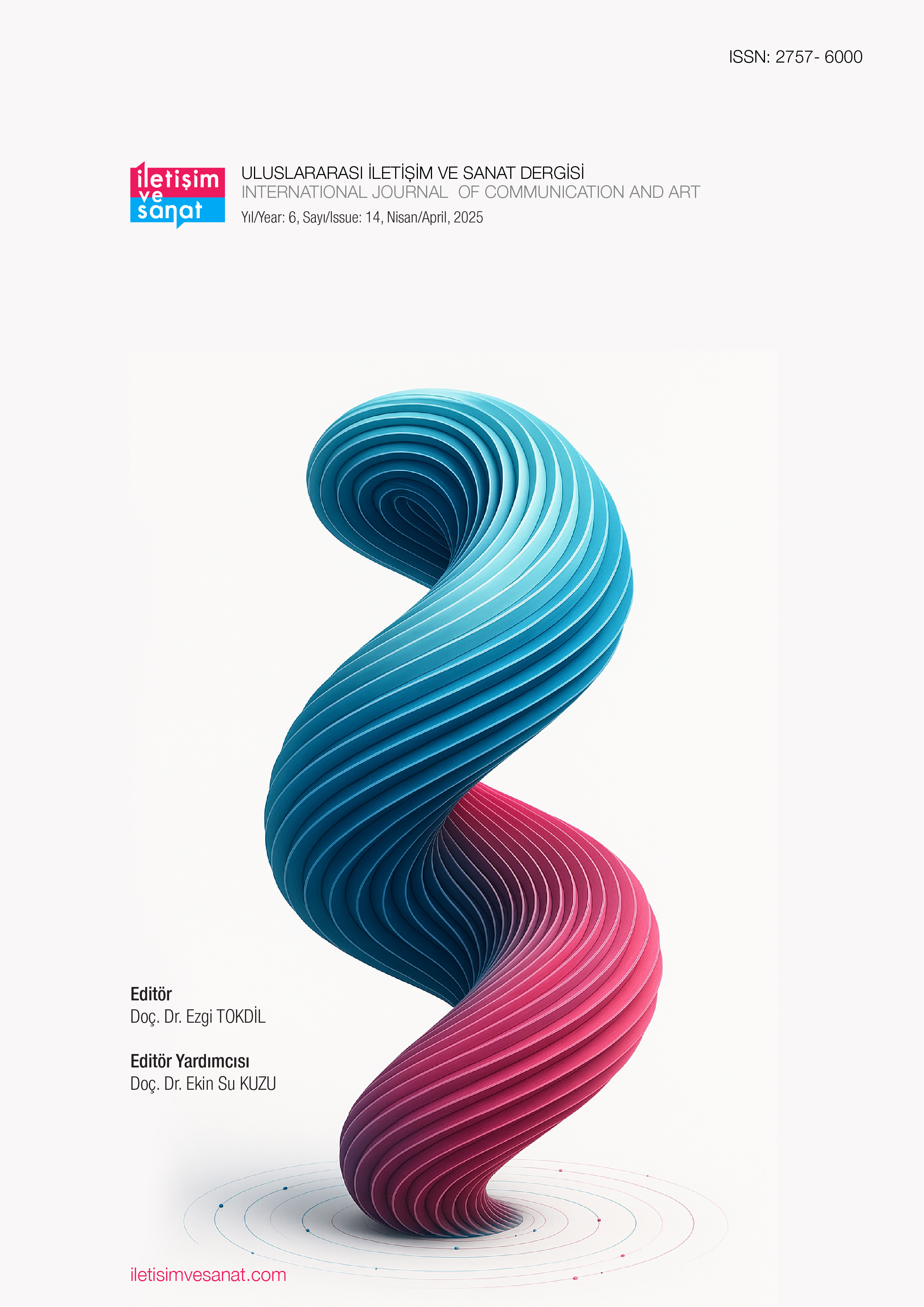Author :
Abstract
Yaşanan çağda, sanatsal ifade ve beğeni ve hatta sanat eserine sahip olmak teknolojinin sunduğu avantajlarla çığır açmış durumdadır. Toplumları ve kültürleri şekillendiren sanat teknolojiyle birlikte değişimini ve ulaşılabilirliğini de hızlandırmıştır. Bilgisayar ve yazılım programları sanatçının malzeme ve sanat nesnesine yaklaşımını da değiştirmiştir. Yazılım ve yeni ara yüzlerle özgün içerikler üreterek yeni yaratıcı imgesel tasarımlarla sanatçının da ifade gücünü artıran dijital teknoloji her geçen gün daha çok aktif kullanıcıya ulaşmaktadır. Sanatçı tarafından nesnenin bağlamına sıkı sıkı tutunup, teknik anlamda ustalaşmayı amaç edinerek gerçekleştirilen sanata geleneksel sanat denilebilir. Resimde boyalarla tuvale işlenen sanat, heykelde gerçeği ayrıntılı bir şekilde kusursuz üç boyutlu olarak verebilmektir. Anlamlar kapalı ve farklı düşünmeye sevk etmeden gerçekleştirilmiştir.
Sanatçı, üretim aşamasında yaratıcılığını ve yeteneğini teknolojik araçları kullanma bilgisiyle birleştirerek zamanın sanatında ivme kazanmaktadır.
Dijital teknolojilerle üretilen sanat, izleyicisi ve takipçileriyle online ya da offline interaktif bir şekilde sürekli iletişim ve etkileşimdedir. Bu etkileşim artık gündelik hayatta zaman ve mekan gerektirmeden internetin ve mobil cihazların olduğu her yerde izleyicisiyle buluşmaktadır. Endüstri ile geleneksel sanata bakış nasıl değiştiyse teknoloji ile sanat yine güçlü bir etkiye maruz kalmıştır. Empresyonizm ile duyguların ön planda olduğu vurgulanırken, kavramsal sanatta vurgu tamamen düşüncededir. Fiziksel bir araç halindeyken sanat, devinimsel görsellere evrilmiş, şimdilerde ise dijital teknolojiler ve interaktif medya ile sanat çalışmaları, dijital ekranlarda rakamlara dönüşmüştür. Dönüşen ve gelişen sanat anlayışı ve üretimindeki değişimlerin günümüz sanatına ve geleceğe yönelik katkıları, “Dijital Sanatın Serüveni ve Sürdürülebilirliği” başlığı altında tartışılacaktır.
Keywords
Abstract
In the current era, artistic expression and appreciation, and even owning a work of art, have made a breakthrough with the advantages offered by technology. Art, which shapes societies and cultures, has accelerated its change and accessibility with technology. Computer and software programs have also changed the artist's approach to materials and art objects. Digital technology, which increases the artist's power of expression with new creative imaginative designs by producing original content with software and new interfaces, reaches more active users every day. Traditional art can be called art that is performed by the artist by holding on tightly to the context of the object and aiming to master it technically. Art, which is processed on canvas with paints in painting, is to be able to give reality in detail and flawlessly in three dimensions in sculpture. Meanings are realized without being closed and leading to different thinking.
The artist gains momentum in the art of the time by combining his creativity and talent with the knowledge of using technological tools in the production phase.
Art produced with digital technologies is in constant communication and interaction with its audience and followers online or offline. This interaction now meets its audience wherever there is internet and mobile devices in daily life without requiring time and space. Just as the perspective on traditional art changed with industry, technology has also had a strong impact on art. While it was emphasized that emotions were at the forefront with impressionism, the emphasis in conceptual art is entirely on thought. While art was a physical tool, it evolved into dynamic visuals, and now with digital technologies and interactive media, works of art have turned into numbers on digital screens. The contributions of the changing and evolving understanding of art and its production to today's art and the future will be discussed under the title of "The Adventure and Sustainability of Digital Art".





